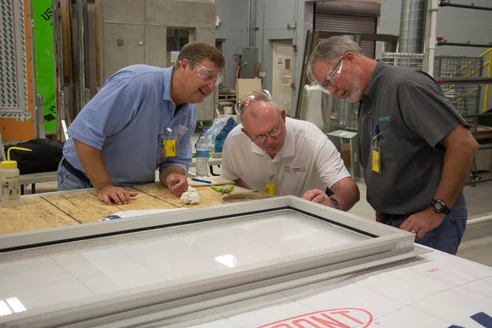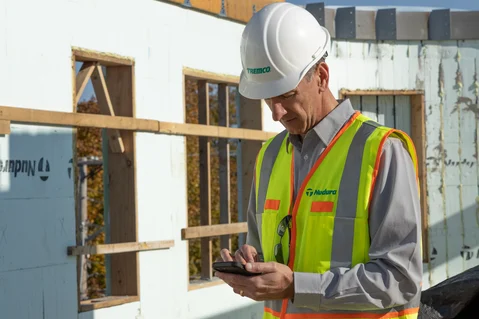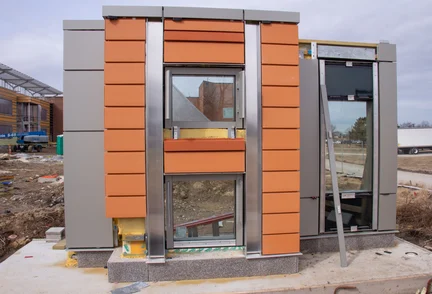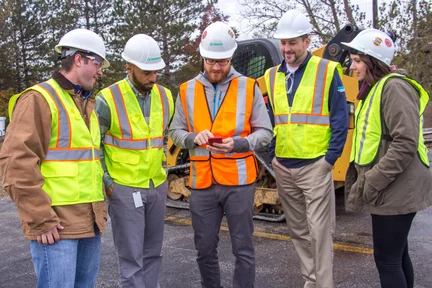3 Reasons to Strengthen Your Relationship with Material Manufacturers


The success of any construction project relies on the collaborative efforts of the involved organizations, including the architect, building owner, general contractor, trade partners, manufacturers, and any other parties. A gap in any of these lines of communication can be detrimental to the building’s performance and longevity.
I have found that many individuals on the project team, including those on the design team, are not using their connection with building material manufacturers to its fullest potential. The countless variables in the construction process can easily lead to confusion and errors, so these trade partners are missing an opportunity to simplify the construction process with fewer call-backs.
Strengthening relationships with manufacturers can reduce risk by providing a more streamlined ordering process, cleaner warranties, and a higher-performing building for the owner and occupants. The additional training, testing, and quality oversight by the manufacturers’ technical representatives is invaluable to the project.
As the labor pool decreases in the trades and new building material systems emerge, reliable communication between architects, contractors, and manufacturers is a must to ensure proper product application and the long-term operation of the building.
Many companies in the construction industry only bring in the building materials manufacturer when they have a problem in the field. However, the earlier that a representative from a manufacturer is incorporated, the more valuable their input and suggestions will be during construction.

Generally speaking, a manufacturer’s goal is to provide reliable products to the end user, and they have been making strides to simplify their systems for designers and contractors. From self-adhered air barrier membranes, primer-less waterproofing membranes, sealants suitable in damp conditions, and customizable glazing solutions, there are numerous product innovations that have stemmed from customer feedback. By maintaining communication with your manufacturer throughout the construction cycle regarding their products’ quality and workability, the more likely the manufacturer will be to adapt their approach, go back to the drawing board, or find new solutions to satisfy current and future projects.

In addition, many manufacturers in the exterior building envelope space are extending their one-year material and labor warranty to a five-year material and labor warranty due to project requirements specified by the owners or designers. While this can be a benefit to the contractors, trade partners also need to understand this higher expectation and make certain they have proper risk management and quality processes in place to avoid call-backs.
 Most manufacturers have documented testing from their research and development (R&D) teams to prove adhesion and compatibility of various products that may overlap. Some even have in-house testing facilities to conduct more extensive testing for large wall systems at project-specific conditions. Working with your manufacturer’s point of contact can connect you with this data and open your project up to individualized tests to ensure the design intent is implemented properly.
Most manufacturers have documented testing from their research and development (R&D) teams to prove adhesion and compatibility of various products that may overlap. Some even have in-house testing facilities to conduct more extensive testing for large wall systems at project-specific conditions. Working with your manufacturer’s point of contact can connect you with this data and open your project up to individualized tests to ensure the design intent is implemented properly.
Manufacturers can also assist with jobsite performance mockups. These mockups are critical for certifying the aesthetics and performance match the architect’s intent and the building owner’s expectations. The mockups can catch design gaps, application mistakes, or other challenges before the error is made and then replicated across the building. If you wait too long in the construction process to build and test a mockup, the remediation of those potential errors in the field could be extremely costly. Consider water testing, air testing, adhesion tests for sealant joints, pull tests for air barrier adhesion, and nozzle tests on transition details, to find any potential failure points in your building envelope system. Involving the manufacturer during the build and testing of these mockups will help catch these issues and save you from expensive repairs and schedule delays.
